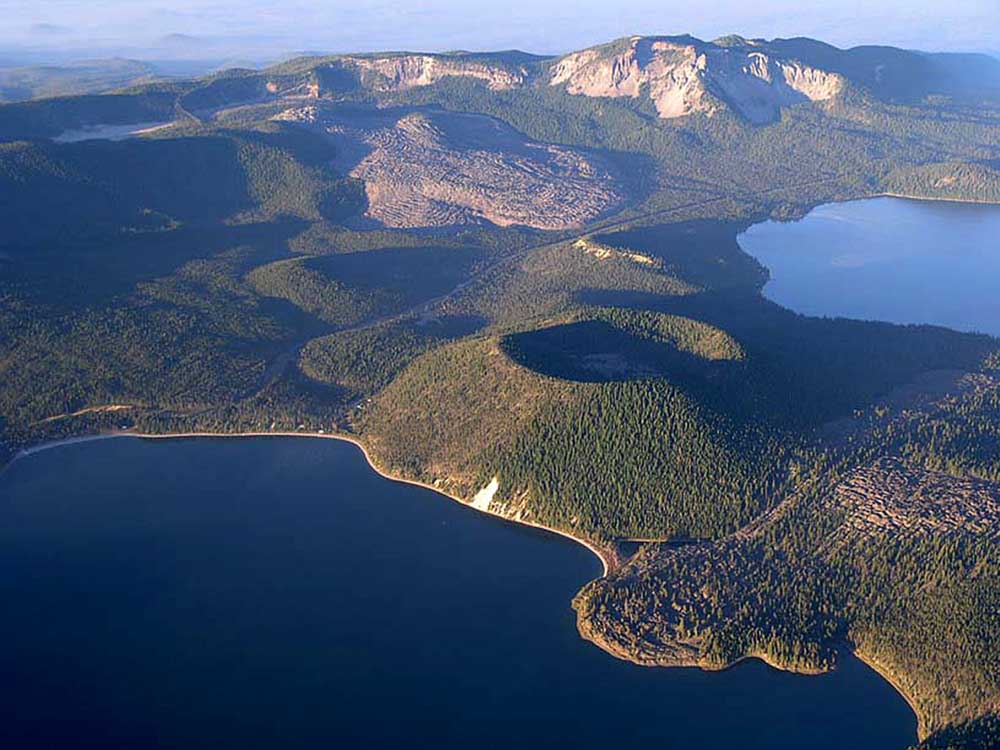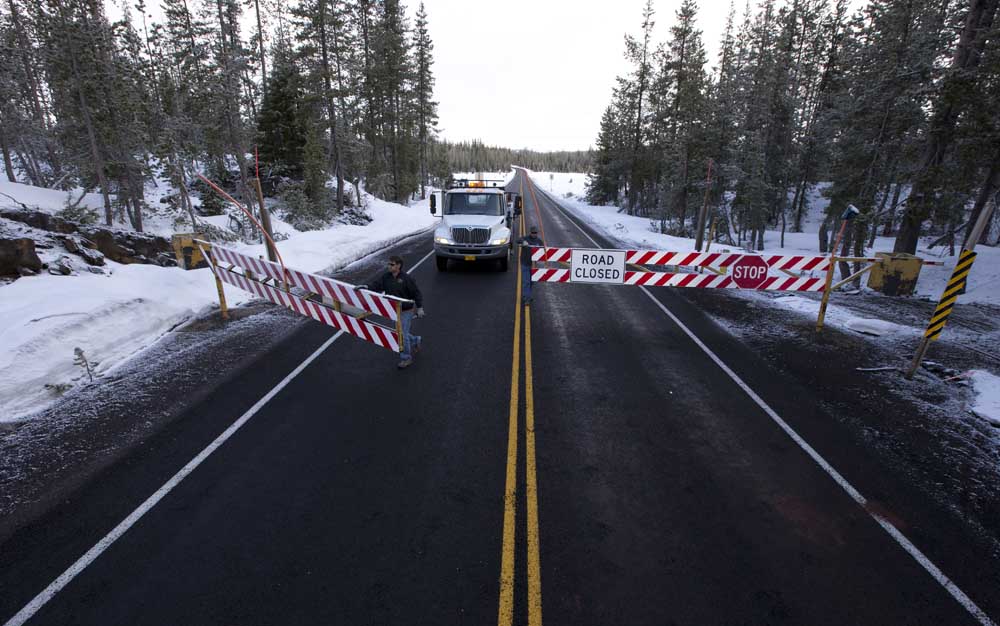Geothermal opportunities heating up at Newberry Crater
Published 4:30 pm Thursday, October 14, 2021

- An area on the west flank of the Newberry Volcano.
The lakes, streams, and pine forests that cover Newberry Crater may create a peaceful setting, but deep below the surface of this volcanic landscape lies an inferno of ultra hot rocks that have enough stored energy to potentially power tens of thousands of homes in Deschutes County.
AltaRock Energy, a Seattle-based company that has conducted geothermal energy tests near Newberry National Volcanic Monument, reports that the site could be the first in the country with a power station fueled by so-called super-hot rock technology. The company announced the results of a technical and economic feasibility study on the project in September.
Geothermal energy is carbon-free and could help to significantly reduce Central Oregon’s reliance on fossil fuels. The city of Bend has a goal of reducing its greenhouse gas emissions by 40% by 2030 and 70% by 2050, from 2016 levels. AltaRock said its project also uses less water compared to conventional engineered geothermal projects.
“Newberry would be the first (super-hot rock) development in the world. It promises to provide baseload renewable power at a price that is much lower than other geothermal projects and competitive with natural gas and other renewables,” said Geoff Garrison, vice president and senior geochemist for AltaRock.
AltaRock describes super-hot rock as a geothermal resource created by sweeping heat from hard rock that is above 752 degrees Fahrenheit. This type of geothermal resource can produce five to 10 times the power of a conventional geothermal resource with temperatures in the range of 392-482 degrees F.
AltaRock reported last month that super-hot rock resources carry an electricity cost of 5 cents per kilowatt-hour. This is significantly lower than conventional geothermal resources that produce power at 7 to 10 cents per kWh.
“Modeling of the Newberry resource demonstrates that super-hot rock resources can provide very competitively priced electricity with a much lower environmental footprint than other renewables,” said Garrison.
Global possibilities
Garrison said super-hot rock resources can eventually be developed anywhere in the world and is not specific to volcanic formations like Newberry. High temperatures exist in basement rock everywhere, but at different depths.
“Shallower high heat sources like Newberry, which is 450 Celsius at less than 5 kilometers, are the most accessible,” said Garrison. “The technology needed to economically access this resource is being developed by AltaRock Energy and its partners.”
AltaRock Energy estimates the first commercial production within five years.
AltaRock said the lower cost of its technology is due to higher energy density and water usage — a super-hot rock well is five to 10 times higher in energy density compared to conventional wells and uses one-tenth the amount of water.
“Super-hot rock geothermal has the smallest environmental footprint of any renewable energy resource, sharply reducing the need for transmission infrastructure,” said Garrison. “We believe it has the potential to meet a significant portion of global energy demand by 2050.”
Deschutes County Commissioner Tony DeBone said he supports a geothermal investment near Newberry Crater.
“There is a lot of … energy this side of Newberry,” said DeBone. “Geothermal and conservation is the best money you can spend.”
Geothermal power would help Bend reduce its reliance on fossil fuels. Currently, around half of PacifiCorp’s energy comes from coal, according to Drew Hanson, a spokesman for the company. The other half comes from a mix of hydropower, wind, solar, and natural gas. PacifiCorp is the parent company of Pacific Power.
Oregon Department of Energy spokesperson Jennifer Kalez said if AltaRock moves forward with its energy-generating project, depending on the size, the review process may go through the Oregon Energy Facility Siting Council process, which combines state and local government requirements, including land use, into a single decision and appeal path.
Studied since the ‘70s
Geothermal production at Newberry has been studied since the 1970s. The early days of research raised environmental concerns, which led to the creation of the Newberry National Volcanic Monument in 1990 to protect the above-ground natural wonders, which include Paulina Lake, East Lake, and the Big Obsidian Flow.
After the establishment of the monument, all geothermal leases were moved outside its boundaries. In 2008, one of the leaseholders, Davenport Newberry LLC, drilled wells 10,000-feet deep and located very hot rock (620 degrees F) but no hydrothermal fluid to create steam.
AltaRock evaluated the site, saw the potential for development, and formed a partnership with Davenport. AltaRock has been the operator of record since 2011. In 2013, the company completed the acquisition of the project from Davenport.
What is being proposed is an engineered geothermal system, which involves drilling an injector and producer well into the Earth’s crust to depths less than about 3 miles.
Engineered geothermal technology can be used at a site where there is geothermal heat, but no naturally occurring water to produce steam. Newberry, a shield volcano that last erupted 1,300 years ago, is an example of such a site.
Once a well is drilled, cold water, or other cold fluid, is pumped into the hot rock, in a process called “stimulation,” which creates an engineered reservoir made of fractures in the rock.
AltaRock, which has been studying engineered geothermal technology at Newberry since 2009, uses earthquake monitoring equipment to map out the fracture networks around the well.
Water is then pumped into the injector and extracts the heat of the rock at supercritical temperature, producing steam with very high energy density that flows to the surface through the production well. Supercritical temperature, which occurs at just over 700 degrees F, is a “fourth state” of water, not a solid, liquid, or gas, but having an appearance similar to vapor.
During the power-generation cycle, water is continuously pumped down the injection wells into the reservoir of fractures, absorbing heat from the surrounding rock.
The supercritical water is then pumped through the production wells. At the surface, the hot fluid is piped through the power plant, driving turbines and generating electricity, before being re-injected into the reservoir.
AltaRock’s site at Newberry is a tremendous heat resource that if tapped could produce several gigawatts of power. The demonstration site is set up to produce 25 to 30 megawatts. Expanding the system to a total of five wells could provide over 100 megawatts. AltaRock says this amount is enough to meet most of Bend’s energy demand.
If the project moves ahead to energy production, one-quarter of the royalty revenues from the project would go to Deschutes County, AltaRock reports. Another 25% would go to the state. Once construction is complete, the operation could employ around 25 to 50 full-time workers, with local contractors hired for support.






